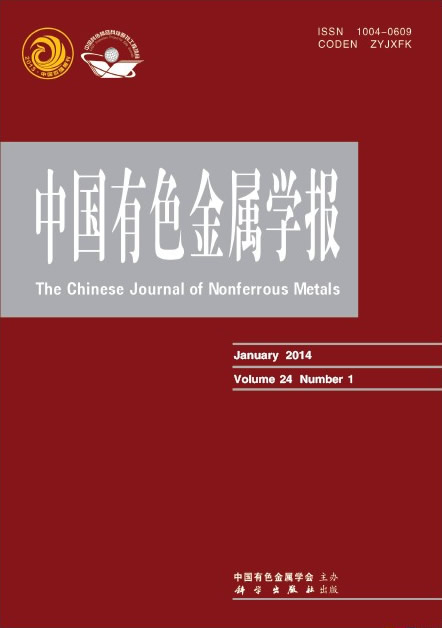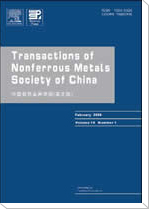(1. 江苏科技大学 冶金与材料工程学院,镇江 215600;
2. 广东省科学院资源利用与稀土开发研究所,广州 510650;
3. 广东省稀土开发及应用重点实验室,广州 510650;
4. 稀有金属分离与综合利用国家重点实验室,广州 510650)
摘 要: 针对锌置换渣中有价金属元素种类多、物相组成复杂的特点,本研究提出采用一段常压-二段氧压浸出的方法高效浸出锌置换渣中的有价金属。采用XRD和SEM-EDS对浸出渣物相以及形貌进行了分析。结果表明:在硫酸浓度1.5 mol/L、温度80 ℃、液固比7.5 mL/g、浸出时间3 h的条件下,常压浸出过程中Cu、Zn、Cd、Fe、Ni、Ga和Ge的浸出率分别为97.48%、99.43%、99.82%、97.21%、98.97%、97.74%、82.46%。对常压浸出渣进行二段氧压浸出,在氧气分压0.6 MPa以及硫酸浓度为0.25 mol/L条件下,Cu和Ge的浸出率可进一步分别提高至99.87%和91.66%。通过两段浸出,原来在置换渣中存在的Cu、Zn、Fe等物相消失,浸出渣主要由Pb和Si组成;铅的主要物相为PbSO4,Si以粒径较小的聚合硅胶颗粒和块状SiO2颗粒形式存在;聚合硅胶颗粒和块状SiO2颗粒中Ge含量较高,对Ge的浸出造成不利影响。
关键字: 锌置换渣;镓;锗;浸出率
(1. School of Metallurgy and Materials Engineering, Jiangsu University of Science and Technology, Zhenjiang 215600, China;
2. Institute of Resources Utilization and Rare Earth Development, Guangdong Academy of Sciences, Guangzhou 510650, China;
3. Guangdong Province Key Laboratory of Rare Earth Development and Application, Guangzhou 510650, China;
4. State Key Laboratory of Separation and Comprehensive Utilization of Rare Metals, Guangzhou 510650, China)
Abstract:In this study, a novel leaching method combined with atmospheric leaching with oxygen pressure leaching was proposed to extract valuable metals from zinc refinery residues owing to high contents of valuable metals and complex phases compositions. XRD and SEM-EDS analyses were used to detect the transformation of phase and morphology. The results show that, during the atmospheric leaching, the leaching rates of Cu, Zn, Cd, Fe, Ni, Ga and Ge are 97.48%, 99.43%, 99.82%, 97.21%, 98.97%, 97.74% and 82.46%, respectively, under conditions with H2SO4 solution of 1.5 mol/L, liquid solid ratio of 7.5 mL/g, temperature of 80 °C and leaching time of 3 h. Subsequently, the leaching rates of Cu and Ge can increase to 99.87% and 91.66%, respectively, in a 0.25 mol/L H2SO4 solution with an oxygen partial pressure of 0.6 MPa through the second stage pressure leaching. The leaching residue is mainly composed of PbSO4 and SiO2, whereas Cu, Zn, Fe and other phases absolutely disappear. Moreover, these containing Si particles can be divided into polymerized silica gel particles with smaller particle size and massive SiO2 particles. These containing Si particles presents a relatively high Ge content, resulting in a low Ge leaching rate.
Key words: zinc refinery residue; gallium; germanium; leaching ratio


